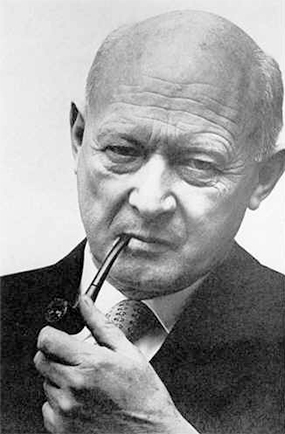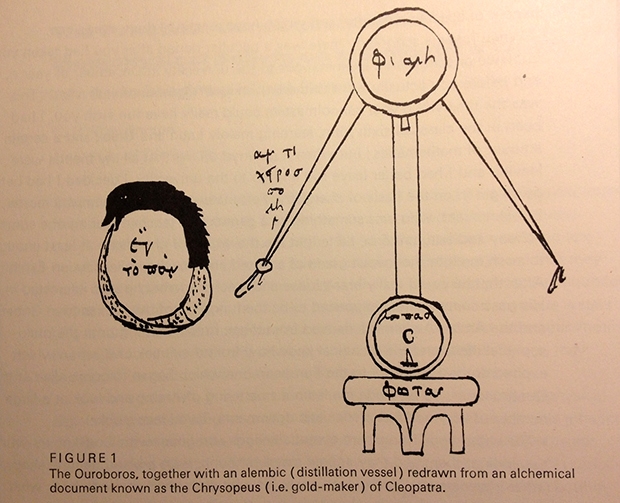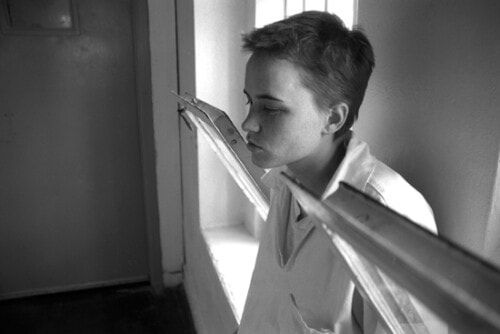“The existence of the quantum discontinuity means that the past is never left behind, never finished once and for all, and the future is not what will come to be in an unfolding of the present moment; rather, the past and the future are enfolded participants in matter’s iterative becoming.”
—Karen Barad 1
Attention and Critique, Love and Blame
Are new materialists ungrateful daughters, too quick to blame our feminist foremothers for discounting the vivid material implications of biology and too quick to praise our forefathers for illuminating the scientific and philosophical complexities of the material world? Such is the charge of Sara Ahmed, who argues that new materialism’s founding gesture is the framing of second stage feminism as anti-biologistic. 2 Such a critique can only be made, she argues, by failing to pay attention to the female scientists and philosophers of science who really were out there, working away, from the 1920s through the 1970s and 1980s. If routinized, she argues, this gesture “would have problematic consequences for our understanding of the genealogy of feminist thought.” 3 And when these same new materialists argue that the work of one or another illustrious male scientist or philosopher can be helpful in thinking through what matter might mean to feminists today, Ahmed suggests that they’re engaged in “an uneven distribution of the work of critique, which is after all a labor of love.” She confronts us with a pointed question: “To be blunt, male writers (who are also usually dead and white) are engaged with closely, while feminist writers are not. What does this uneven distribution of attention and care actually do?” 4
Ahmed’s fundamental point is, of course, a good one: “[f]eminist work in science studies […] must be read as intrinsic to feminist theory rather than apart from it.” 5 And yet that’s precisely the issue. When contemporary feminist scholars point to a gap in feminist theory of the 1960s and 1970s, they are engaging in the very process of feminist inquiry as Joan Scott defines it: “a relentless critical operation, a movement of desire.” 6 Rather than critiquing new materialists for what Ahmed calls a “false and reductive history of feminist engagement with biology, science and materialism,” we might consider the theoretical lacunae that characterized feminist theory in that era as symptomatic of a desire to transcend the many ways society and culture gender us female and limit us to our biological reproductive capacities. 7
Certainly the vision of second stage feminism was partial—it too often neglected issues of race, class, ethnicity, disability, and age, as well as science. However while there is no doubt that female and feminist scientists should be incorporated into the feminist story just as knowledge of the black, Chicana, and Asian American feminist movements has enriched our understanding of second wave feminism, in neither the former nor the latter case is it adequate simply to add female/feminist scientists and stir. Feminists who want to do full justice to the rich genealogy of feminist thought and female work in science and science studies must return not only to “the feminist work that comes before us, in all its complexity,” but to the context in which that work emerged. 8 The reconceptualization of “feminism as a restless critical operation,” Joan Scott notes, has severed its ties to Enlightenment teleologies as well as to such utopian concepts as “complete emancipation.” 9 Utopian promises rely on a vision of the universe in which human agency is dominant, but the effect of global climate change has demonstrated the inadequacy of a human-centered view as anchor for any emancipatory theory, including feminism. We must widen our attention and our concern; the vision of a cohesive feminism focused on the specific category of women must give way to a new model of feminist inquiry that acknowledges the ways things of this world shape, unsettle, and interfuse us—and we them. 10 Venturing beyond cohesive groupings of gender and discipline, this new feminist perspective not only challenges the nature/culture, art/science divides, but pushes toward a repositioning of the human being itself in a larger spatial and temporal context, horizontalizing relations between human beings, other living things, and the world of objects. 11
To pay equal attention to materiality, Jane Bennett has observed, “draws human attention sideways, away from an ontologically ranked Great Chain of Being and toward a greater appreciation of the complex entanglements of humans and nonhumans.” 12 Ironically, such a decentering of the human is necessary if we are to understand the wicked problems of our era, complex hybrid situations like global warming or environmental pollution that require nonlinear thinking to understand them. 13 For this reason, I take it as axiomatic that a broader rather than narrower distribution of feminist attention (not only to men as well as women, but also to animals and nonliving beings) must play a crucial part in any feminist theory. I want to demonstrate what this alternative mode of attention might yield by turning to a gathering that took place far from the hot zone of feminist theorizing.
The Serbelloni Symposium
In August 1967, twenty people gathered for 10 days at the Villa Serbelloni, the Rockefeller Foundation Research Center on Lake Como, Italy, at the invitation of biologist C.H. Waddington. Their goal: to “bring into being a not yet existent academic discipline of THEORETICAL BIOLOGY” one that “should exist in the same sort of way that Theoretical Physics does today.” 14 In addition to Waddington, participants included the theoretical physicist David Bohm, a molecular biologist, three neuroscientists, a geneticist, seven physicists, a theoretical chemist, a chemical engineer, a systems analyst, a philosopher, an automata theorist, and a secretary. 15 Eighteen men and two women: the philosopher Marjorie Grene and the secretary, a Miss D. Manning.
The Second Serbelloni Symposium (there were four of them, all told, between 1966 and 1969) had significant implications for our emerging understanding of the relations between animals, humans, and nonliving things. While in a longer project I explore other aspects of the Symposium, my concern here is the prominence given to the field of epigenetics that combined the insights of embryology and genetics in order to undertake “the causal study of development.” 16 In a pivotal moment of the Symposium that I will examine in what follows, an important exclusion was made in the conceptualization of this field; certain issues were deemed outside of its area of investigation. This exclusion has important consequences for the ways we now view humans, animals, and others, as well as for the way feminists understand our own past(s).
Gathered to map the new discipline of theoretical biology, the conference attendees were not expected to develop a completely coherent theory; instead, they were simply asked to suggest some of the questions such a new field might pose. 17 This was an opportunity to think broadly, particularly since C.H. Waddington, the convener of the meeting, had a commitment to interdisciplinarity so strong that many orthodox biologists found him “irregular.” 18 His research publications spanned “paleontology, population genetics, developmental genetics, biochemical embryology and theoretical biology”; as recently as 2002, while celebrating him as the “last Renaissance biologist,” Jonathan Slack said of Waddington’s career trajectory: “No modern funding agency would allow any individual to undergo so many changes of interest and direction.” 19 Jonathan B. L. Bard agrees: “his interest was not in the minutiae of mathematical prediction […] he simply loved thinking about biological principles and analyzing their implications for the living world […] an old-fashioned intellectual, [he] let his reading, thinking, and analysis guide his research and writing.” 20

A broadly metaphysical approach was integral to Waddington’s thinking, as he told the participants in the autobiographical essay with which he opened the proceedings. He also claimed this perspective as an integral part of the toolkit of biology, which approached its subject in a kind of pincer movement from outside its domain, “firstly from general metaphysics and secondly from considering the origin of life from non-living systems.” 21 Almost defiantly, he proclaimed, “I am quite sure that many of the two hundred or so experimental papers I produced have been definitely affected by consciously held metaphysical beliefs, both in the types of problems I set myself and the manner in which I tried to solve them.” 22 Such preoccupations dated back to his childhood, he recalled, when a summer tutorial in chemistry designed to prepare him for the university soon diverged into to more esoteric studies: the Alexandrian Gnostics, the Arabic Alchemists, and lessons in Arabic. Thanks to that tutorial, he says, two ideas “infiltrated into my thinking at a very early stage, without much benefit of academic dignity, and which have remained there ever since.” 23
Let’s consider these two ideas, and the images in which Waddington expresses them in his Serbelloni talk. (And here I am implicitly taking issue with Ahmed’s claim that to pay attention to male writers shortchanges women writers. Attention is not a zero sum game after all.)
The world egg “Things” are essentially eggs—pregnant with God-knows-what. You look at them and they appear simple enough, with a bland definite shape, rather impenetrable. You glance away for a bit and when you look back what you find is that they have turned into a fluffy yellow chick, actively running about and all set to get imprinted on you if you give it half a chance. Unsettling, even perhaps a bit sinister. But one strand of Gnostic thought asserted that everything is like that.
The Ouroboros, the snake eating its tail. This famous symbol […] expressed the whole gist of feedback control almost two millennia before Norbert Wiener started “creating” about the subject at MIT and invented the term “cybernetics.” 24

In the published version of his Serbelloni Symposium presentation, Waddington included a drawing that he made while still a schoolboy, explaining: “I reproduce it because you will see that inscribed within the Ouroboros is a third subsidiary notion […] ‘the one, the all,’ a phrase which implies (in a cybernetic context, be it remembered) that any one entity incorporates into itself in some sense all the other entities in the universe.” 25 These vivid images of the world egg and the Ouroboros suggest the complex relations between the experimenter and the biotic and abiotic life with which he interacts. As I will go on to argue, Waddington’s response to them marks the moment when theoretical biology withdrew not only from its metaphysical preoccupations but from its related, specifically sensuous and situated exploration of ontology, limiting itself instead to quantification and mathematical modeling, a shift with significant implications for the nascent field of epigenetics as well as for the feminist analysis of biopolitics. 26
- Karen Barad, Meeting the Universe Halfway: Quantum Physics and the Entanglement of Matter and Meaning (Durham: Duke UP, 2007): 234.[↑]
- Sara Ahmed, “Open Forum Imaginary Prohibitions: Some Preliminary Remarks on the Founding Gestures of the ‘New Materialism,’” European Journal of Women’s Studies 15.1 (2008) 23-39. [↑]
- Ahmed 2008: 24.[↑]
- Ahmed, 2008: 30. [↑]
- Ahmed 2008: 30.[↑]
- Joan Wallach Scott, “Feminism’s History,” Journal of Women’s History 16.2 (2004) 10-29, 19.[↑]
- Ahmed 2008: 24.[↑]
- Ahmed 2008: 36.[↑]
- Scott 2004: 19.[↑]
- Scott 2004: 17. Nancy Tuana refers to this complex interweaving as the “agency of materiality and the porosity of entities” in “Viscous Porosity: Witnessing Katrina,” Material Feminisms, eds. Stacy Alaimo and Susan Hekman (Bloomington: Indiana UP, 2008), 188-211, 191.[↑]
- The term “horizontalize” is Jane Bennett’s, though she borrows the concept from John Froh, “A Pebble, A Camera, A Man,” Critical Inquiry 28.1 (2001). Jane Bennett, Vibrant Matter: A Political Ecology of Things (Durham: Duke UP, 2010) 112.[↑]
- Bennett 2010: 12.[↑]
- “In part, the problem arises from questionable ontological divisions separating the natural from the humanly constructed, the biological from the cultural, genes from their environments, the material from the semiotic.” Tuana, in Alaimo and Hekman, 2008: 180. The term “wicked problems” is drawn from Horst W.J. Rittel and Melvin M. Webber, “Dilemmas in a General Theory of Planning,” Policy Sciences 4 (1973): 161. As they formulate this concept, “The process of formulating the problem and of conceiving a solution (or re-solution) are identical, since every specification of the problem is a specification of the direction in which a treatment is considered.” [↑]
- C.H. Waddington, “Sketch of the Second Serbelloni Symposium,” Towards a Theoretical Biology 2. Sketches, ed. C.H. Waddington (Edinburgh: Edinburgh UP, 1969): 1-9. See also C.H. Waddington, “Towards a Theoretical Biology,” Nature 218 (1968): 525-527.[↑]
- Participants included the molecular biologist (Robin E. Monro), the theoretical biologist (Brian Goodwin), the three neuroscientists (Jack Cowan, Richard L. Gregory, and Karl Kornacker) the geneticist (John Maynard Smith), the seven physicists (theoretical physicist David Bohm, and physicists E.W. Bastin, W.M. Elsasser, Martin A. Garstens, Edward H. Kerner, Paul Lieber, and Howard H. Pattee), the theoretical chemist (Christopher Longuet-Higgins) the chemical engineer (L.E. “Skip” Scriven), the systems analyst (A.S. “Art” Iberall,) the philosopher (Marjorie Grene) the automata theorist (Michael A. Arbib) and the secretary (Miss D. Manning).[↑]
- My book in progress, provisionally titled Epigenetic Landscapes, addresses these issues. Linda Van Speybroeck, “From Epigenesis to Epigenetics: The Case of C.H. Waddington,” Ann. N.Y. Acad. Sci. 981 (2002): 68.[↑]
- The concept of theoretical biology had a precedent: formal scientific theory, whose accepted paradigm beginning in the 1920s or earlier was “the use of quantification and mathematical modeling to explain and predict phenomena.” See Jonathan B.L. Bard, “Waddington’s Legacy to Developmental and Theoretical Biology,” Biological Theory 3.3 (2008): 194.[↑]
- Jonathan M.W. Slack, “Conrad Hal Waddington: the last Renaissance biologist?” Nature Reviews/Genetics 3 (2002): 889-895.[↑]
- Slack 2002: 894, 889 also dismisses the collected papers of the Serbelloni Symposia as “a bizarre miscellany of articles about whether there can be general theories in biology, and some specific speculations about development and evolution.” Slack has it wrong, as I intend to show.[↑]
- Jonathan B. L. Bard, “Waddington’s Legacy to Developmental and Theoretical Biology,” Biological Theory 3.3 (2008): 195.[↑]
- Waddington 1969: 1-2.[↑]
- Waddington 1969: 72.[↑]
- Waddington 1969: 72-73.[↑]
- Waddington 1969: 72-73.[↑]
- Waddington 1969: 73.[↑]
- Here I am drawing on Lorraine Daston’s distinction between the epistemological, metaphysical, and ontological components of scientific exploration. While Daston is asking questions about how science creates its objects, I want to suggest that the how of scientific objects occupies a powerful in-between space of inquiry foreclosed by the turn away from metaphysics. Lorraine Daston, “On Scientific Observation.” Isis 99.1 (2008): 97-100. Evelyn Fox Keller has illuminated the institutional and gendered context in which the role of the cytoplasm in development was rediscovered as part of the “long-awaited rapprochement of genetics and embryology.” Refiguring Life: Metaphors of Twentieth-Century Biology (New York: Columbia UP, 1995): 24-5.[↑]


